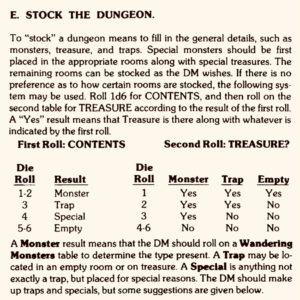Above the summit of Le Bonnet de l’Evêque, dentelated with scaffoldings, rose that second mountain—a mountain on a mountain—which was the Citadel La Ferrière. A lush growth of red fungi was mounting the flanks of the main tower with the terse smoothness of brocade, having already covered the foundations and buttresses, and was spreading polyp profiles over the ocher walls. That mass of fired brick, towering above the clouds in proportions whose perspective challenged visual habits, was honeycombed with tunnels, passageways, secret corridors, and chimneys all heavy with shadows. Light, as of an aquarium, a glaucous green tinted by ferns already meeting in space, tell above a vaporous mist from the high loopholes and air vents. The stairways to hell connected three main batteries with the powder magazine, the artillerymen’s chapel, the kitchens, cisterns, forges, foundry, dungeons. Every day in the middle of the parade square several bulls had their throats cut so that their blood could be added to the mortar to make the fortress impregnable. On the side facing the sea and overlooking the dizzying panorama of the Plaine, the workers were already stuccoing the rooms of the Royal Palace, the women’s quarters, the dining and billiard-rooms. To wagon axles mortised into the walls were attached the suspension bridges over which brick and stone were carried to the topmost terraces, stretching between inner and outer abysses that filled the stomachs of the builders with vertigo. … Hundreds of men worked in the bowels of that vast edifice, always under the vigilance of whip and gun, accomplishing feats previously seen only in the imagined architecture of Piranesi. Hoisted by ropes up the face of the mountain, the first cannon were arriving and being mounted on cedar gun-carriages in shadowy vaulted rooms whose loopholes overlooked all the passes and approaches of the country. There stood the Scipio, the Hannibal, the Hamilcar, satin smooth, of a bronze that was almost gold in hue, together with those that had been cast after ’89, with the still unproved motto of Liberté, Egalité. There stood a Spanish cannon whose barrel bore the melancholy inscription Fiel pero desdichado; and several of larger bore and more ornate barrel, stamped with the seal of the Sun King insolently proclaiming his Ultima Ratio Regum.
— Alejo Carpentier, The Kingdom of this World, pp. 66-67 in my copy
To infuse a fortification (shield, cuirass, wall, gate, citadel, or other similar fortress) with the resolve and quintessence of a beast, sacrifice the beast using a ceremony of fabrication. The sacrifice must be proportional to the scale of the fortification. Prior to the completion of the ritual, the referee will indicate whether the scale of sacrifice is insufficient, uncertain, or sufficient. If the sacrifice is insufficient, and remains unbolstered, the ceremony is unsuccessful and the shaper must save to avoid curse or haunting. If the sacrifice is uncertain, the shaper must save to determine whether the sacrifice is sufficient, thus rendering the ceremony successful.
If the ceremony is successful, the character (both strengths and weaknesses) of the beast is shared by the fortification. The fortification will not fail when facing a challenge against which the beast would be strong.
If the infused fortification is subject to a supernatural challenge, there are two options. In the first option, the spirit of the beast defends against the threat in a spectacular fashion, but then departs the mortal world, leaving the fortification bereft and mundane, but standing and solid. In the second option, save versus the threat to see whether the spirit of the beast remains. On success, the spirit defends against the threat and remains. On failure, the spirit is overwhelmed, flees, the threat is unturned, and the fortification is greatly damaged, near collapse. A save is required to avoid curse or haunting. Player chooses which option to deploy.
Saves depend upon the active underlying system chassis. Something like a save versus magic would be a reasonable default.




